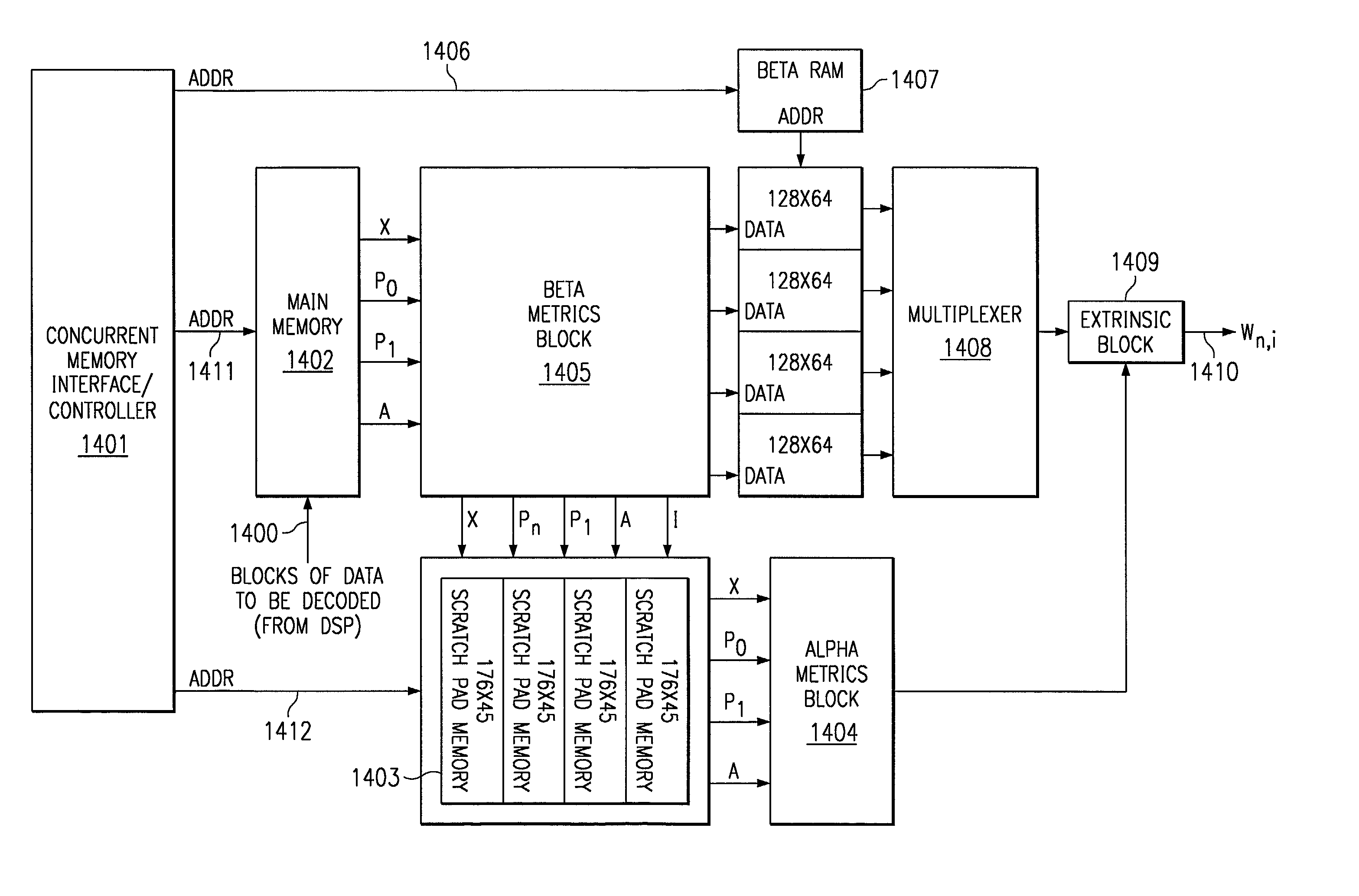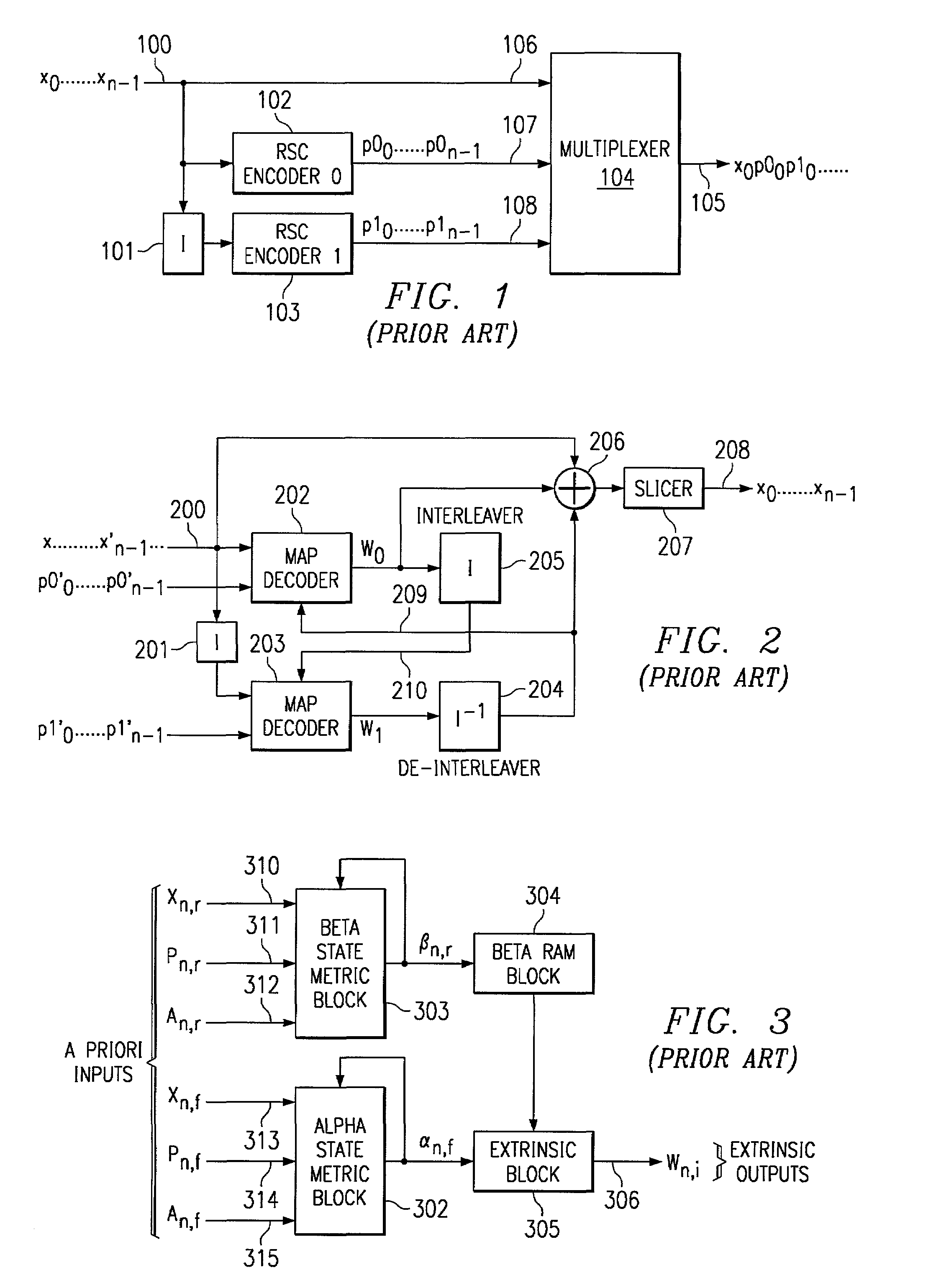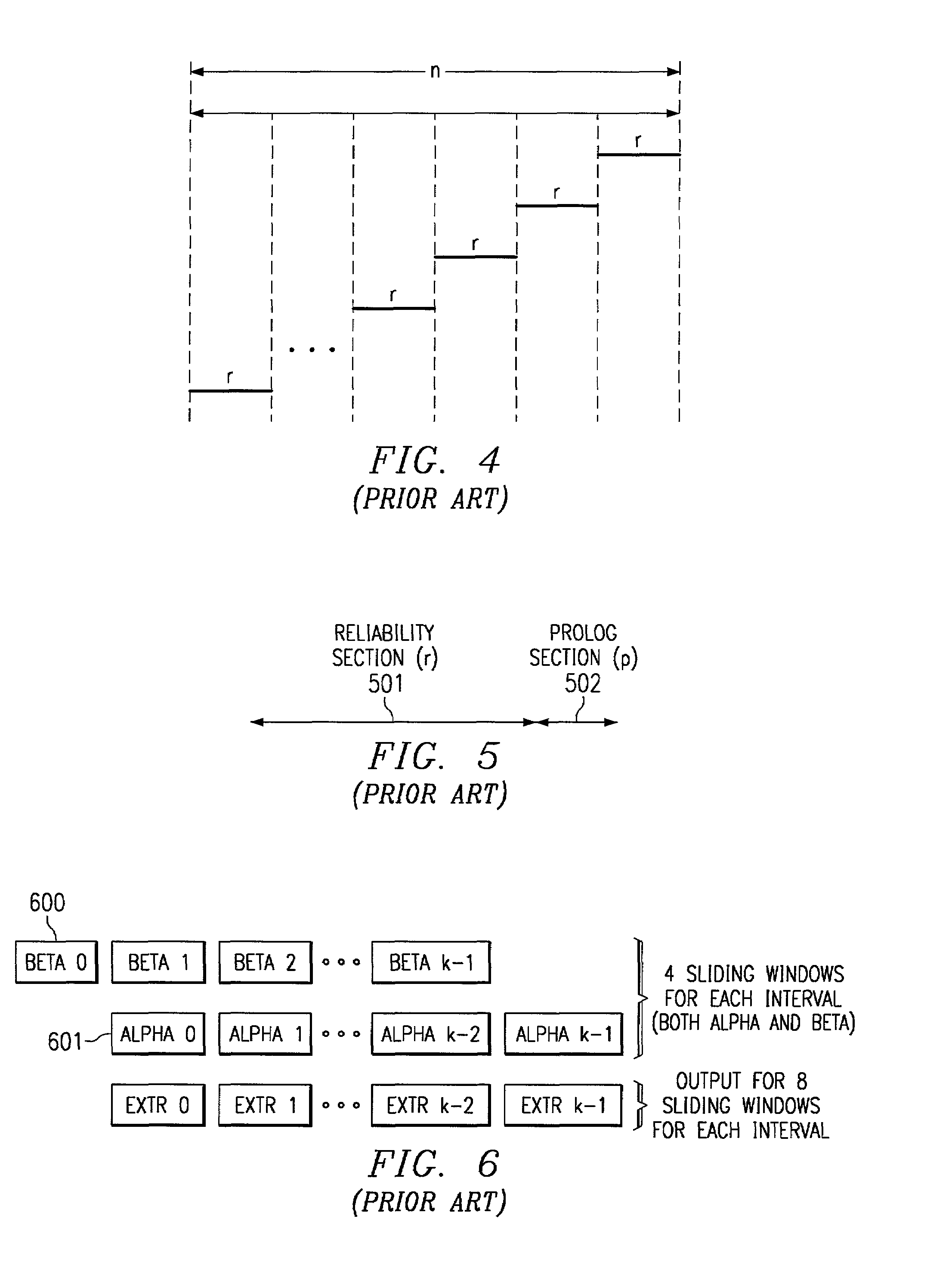Concurrent memory control for turbo decoders
a technology of turbo decoders and memory controllers, applied in the field of turbo decoders, can solve the problems of affecting the processing speed of k sub-blocks, and complexity involved in meeting the required addressing order
- Summary
- Abstract
- Description
- Claims
- Application Information
AI Technical Summary
Benefits of technology
Problems solved by technology
Method used
Image
Examples
Embodiment Construction
[0039]With four sliding windows assumed, FIG. 10 illustrates the physical address order of scratch RAM for the preferred embodiment. Beta processing state takes a maximum of
((128+48)×4)+12=716 cycles [9]
and the alpha prolog processing state takes
(48×4)+8=200 cycles. [10]
The 12 term in equation 9 and the 8 term in equation 10 arise from the extra cycles needed to setup the respective states. The 4 factor in equation 9 represents the number of sliding windows in this implementation. The main data memories are read ((128+48)×4)=704 times and the scratch memories are written (128×4)=512 times during the beta processing state. The beta prolog data is not stored in the scratch memories during the beta processing state.
[0040]The problem of the write and read order is solved with the addition of virtual addresses. The virtual addresses for the beta are always indexed in the reverse order and the virtual addresses for the alpha are always indexed in the forward order. But, the physical add...
PUM
 Login to View More
Login to View More Abstract
Description
Claims
Application Information
 Login to View More
Login to View More - R&D
- Intellectual Property
- Life Sciences
- Materials
- Tech Scout
- Unparalleled Data Quality
- Higher Quality Content
- 60% Fewer Hallucinations
Browse by: Latest US Patents, China's latest patents, Technical Efficacy Thesaurus, Application Domain, Technology Topic, Popular Technical Reports.
© 2025 PatSnap. All rights reserved.Legal|Privacy policy|Modern Slavery Act Transparency Statement|Sitemap|About US| Contact US: help@patsnap.com



